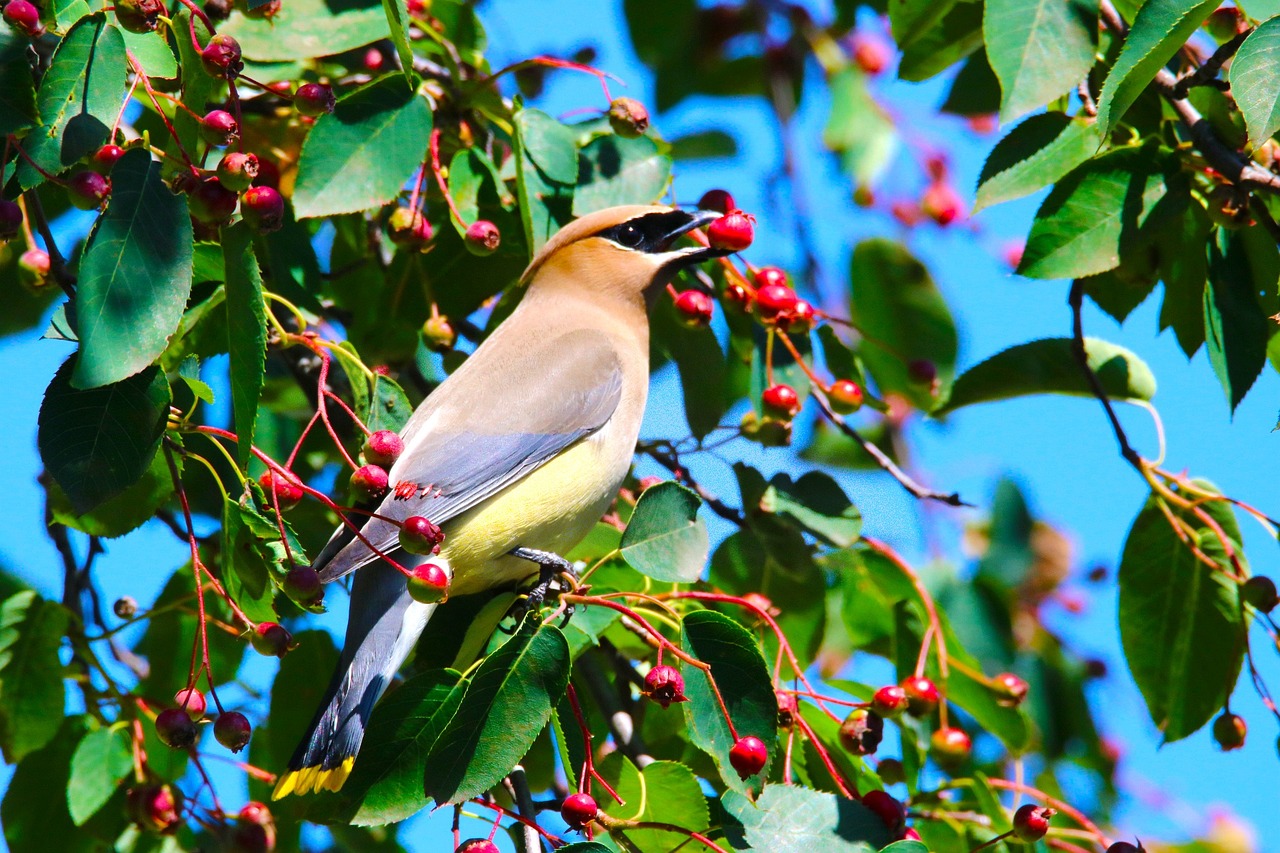Native Plants and Their Importance for Canadian Birds
Native plants play a crucial role in supporting the diverse bird species found in Canada. They provide essential food sources, shelter, and habitat that contribute to avian well-being.
Understanding Native Plants
Native plants are species that naturally occur in a specific region without human introduction. In Canada, these plants have co-evolved with local wildlife, including birds. Such species are well-adapted to the climate, soil, and ecological conditions of their regions.
Using native plants in gardens ensures a sustainable habitat for local birds. These plants thrive with minimal care and use fewer resources compared to non-natives. Additionally, they support ecosystems and help maintain local biodiversity, benefiting various wildlife species.
Benefits of Native Species for Birds
Native plant species offer numerous benefits to birds. They provide food in various forms, including seeds, berries, and nectar. Many bird species, such as finches and thrushes, rely on native seeds and fruits for their diets.
Additionally, native plants create optimal shelter and nesting sites. Dense thickets and shrubs provide protection from predators and harsh weather. Furthermore, these plants contribute to healthy ecosystems by promoting insect populations that are vital food sources for many birds during breeding seasons.
Key Native Plants to Include in Your Garden
Incorporating native plants into gardens can attract various bird species. Some key plants include:
- Eastern Red Cedar: Offers shelter and food in the form of berries.
- Serviceberry: Produces edible berries that attract songbirds.
- Black-eyed Susan: Draws in pollinators, indirectly benefiting birds.
- Milkweed: Supports monarch butterflies and the birds that prey on them.
Selecting a diverse range of native plants will enhance a garden’s ecological value. Planting in clusters also encourages birds to visit more frequently, offering both habitat and food sources that are crucial for their survival.
Bird-Friendly Garden Design and Maintenance
Creating a garden that attracts birds involves careful planning and specific gardening techniques. By considering the needs of birds, such as food sources, water, and nesting sites, it’s possible to design a space that supports these creatures year-round.
Planning Your Bird-Friendly Garden
A successful bird-friendly garden begins with a well-thought-out garden plan. Key elements include selecting a variety of native plants, which provide natural food sources like seeds, berries, and nectar.
Plant Selection Tips:
- Native species: Choose plants that naturally occur in the region, as they offer the best habitat.
- Diversity: Include a mix of trees, shrubs, and perennials to attract different bird species.
- Layering: Create layers in the garden, such as tall trees for larger birds and low shrubs for smaller ones.
In addition to plants, consider the layout. Incorporate open spaces and shelters to accommodate feeding, perching, and nesting behaviors.
Gardening Techniques to Attract Birds
Implementing specific gardening techniques can enhance the appeal of the garden to birds.
Feeding Birds:
- Seed-bearing plants: Incorporate species like sunflowers and coneflowers that produce seeds.
- Berry-producing plants: Include berries from elderberry, serviceberry, and viburnum, preferred by many species.
Water Features:
- Birdbaths: Install shallow birdbaths to provide fresh water.
- Fountains: Moving water can attract birds, as they often seek it for drinking and bathing.
Maintaining a healthy soil environment will also benefit plant growth and attract insects, providing additional food resources for birds.
Seasonal Considerations for Bird Gardens
Bird needs change with the seasons, so tailoring gardening efforts to these changes is essential.
Spring and Summer:
- Nesting: Provide dense shrubbery and tall grasses for nesting sites.
- Food sources: Ensure flowering plants are available for insects and berries for nesting birds.
Fall and Winter:
- Seed supply: Leave seed heads on plants for winter food.
- Shelter: Maintain dense shrubs and evergreen trees to offer shelter from harsh weather.
Regular maintenance, such as pruning and cleaning water features, is important for keeping the garden healthy and inviting for birds throughout the year.
Selecting Bird-Preferred Food Sources
Creating a habitat that attracts birds involves understanding their dietary preferences. Birds in Canada seek a variety of seeds, fruits, and insects, making specific plant selections essential for birdwatchers and nature enthusiasts.
Seeds and Fruits That Attract Various Bird Species
Different bird species are drawn to specific seeds and fruits. For instance, sunflowers are particularly appealing to cardinals, finches, and jays. The seeds are high in fat, providing energy during colder months.
Elderberry, serviceberries, and mulberries also attract a variety of birds. American goldfinches and tanagers are known to seek out these berries during their migration and breeding seasons.
Additionally, fruit-bearing plants provide essential nutrients. Flowering dogwood not only offers blossoms but produces berries that are sought after by many birds, including chickadees and titmice. Combining these plants can create a diverse feeding ground for different avian populations.
The Role of Insects and Caterpillars in Bird Diets
Insects and caterpillars play a crucial role in the diets of many birds. They are particularly important for nesting birds as they provide protein necessary for chick development.
Plants that support insect populations, such as Virginia creeper and staghorn sumac, are beneficial. These plants attract insects that, in turn, feed various bird species. Woodpeckers often search these plants for beetles and larvae hidden in the bark.
Meanwhile, grosbeaks and tanagers benefit from a diet rich in caterpillars during the breeding season. Including native plants that support a range of insects ensures a healthy bird population in the area.
Preferred Plants for Specific Birds
Certain birds have particular plant preferences. For example, cardinals and jays are attracted to shrubs like red-osier dogwood because of their dense structure and plentiful seeds.
Finches, especially the American goldfinch, thrive in areas with sunflower plants. These provide both seeds and shelter.
Fruits from nannyberry bushes are favored by birds like chickadees and titmice, contributing to their fat reserves before migration. Choosing a variety of native plants helps meet the specific dietary needs of these diverse bird species.
Image by DivaDan from PixabayShare this content:
